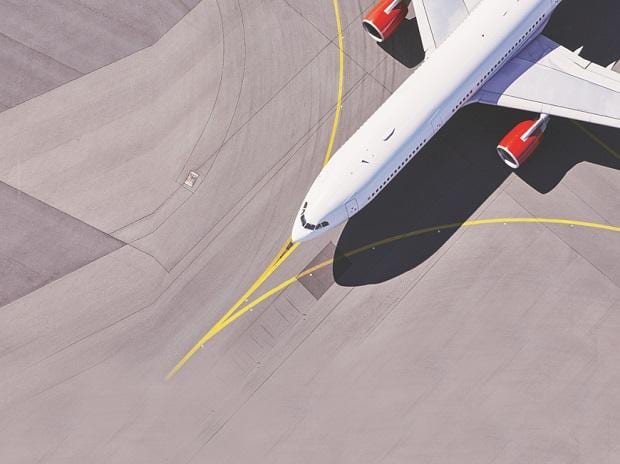[ad_1]
North India has been gripped with dense fog and severe cold for the past few days. Airports, especially Delhi’s Indira Gandhi International Airport, have issued constant advisories to passengers on flight delays. On Monday, five flights that were to land at the Delhi Airport were diverted to Jaipur due to low visibility.
Delhi airport tweeted, “Due to dense fog, flight operations at Delhi Airport may get affected. Passengers are requested to contact the airline concerned for updated flight information. Any inconvenience caused is deeply regretted.”
The pilots face considerable difficulties in taxiing and taking off. It also poses challenges during the landing.
How do planes take off in dense fog?
The most challenging part of the whole process is taxiing. If the visibility is below 600 meters, the airports switch to Low Visibility Procedures (LVPs). Under these, the Air Traffic Control and pilots use maps and visual communication to manoeuvre aircraft on the taxiway.
The holding point on the taxiway, where aircraft must stop before receiving ATC’s signal and going to the runway, is moved further away. This ensures a safe distance between the taking off and the waiting aircraft.
Also, no aircraft is allowed to reach the runway before the previous flight is completely airborne. This is the main reason for delays. It is unlike the practice on a normal day when two or more planes line up at the runway and take off one after the other, saving time.
Furthermore, the pilots ensure that the plane is perfectly in the centre of the runway during take-offs in dense fog. ATC ensures that there is no obstruction on the runway.
How do planes land in dense fog?
For landing, the airports must have high-level Instrument Landing Systems (ILS). It is a state-of-the-art anti-fog landing system and helps the planes land with the help of radio signals and high-intensity lighting arrays. There are various categories of ILS.
The most widely used ILS in India is the CAT IIIB system which uses a radio altimeter to determine the decision height for landing. It uses voice prompts to tell the pilot when they need to deploy the flaps and, subsequently, when it needs to apply the brakes. Delhi, Amritsar, Jaipur, Lucknow, Bangalore and Kolkata airports are equipped with CAT IIIB. Mumbai airport does not have it because of better weather conditions.
CAT IIIC is so advanced that it can land the aircraft in zero visibility. New York’s JFK and London’s Heathrow airports are equipped with CAT IIIC.
However, training the pilots and crew is also important for them to be able to use these systems. According to a report by The Quint, training one pilot to use CAT IIIB may cost Rs 10 lakh. Various airlines, including Vistara, Jet Airways and Air India Express, support CAT IIIB.
Additionally, several changes need to be made to the runways for ILS to work, like installing a glide slope station and High-Intensity Runway Lighting and lane markings.
Is Delhi airport prepared for dense fog?
The airport has a CAT IIIB landing system, the most advanced system in India. It has also activated LVPs.
On January 9, the airport tweeted, “Low Visibility Procedures are in progress at Delhi Airport. All flight operations are presently normal. Passengers are requested to contact the airline concerned for updated flight information.”
On January 8, it said, “While landings and take-offs continue at Delhi Airport, flights that are not CAT IIIA compliant may get affected. Passengers are requested to contact the airline concerned for updated flight information. Any inconvenience caused is deeply regretted.”
On its website, the airport also shares the waiting times at various gates on Terminal 3. It can be checked under Passenger Guide> Wait Time.
[ad_2]
Source link



